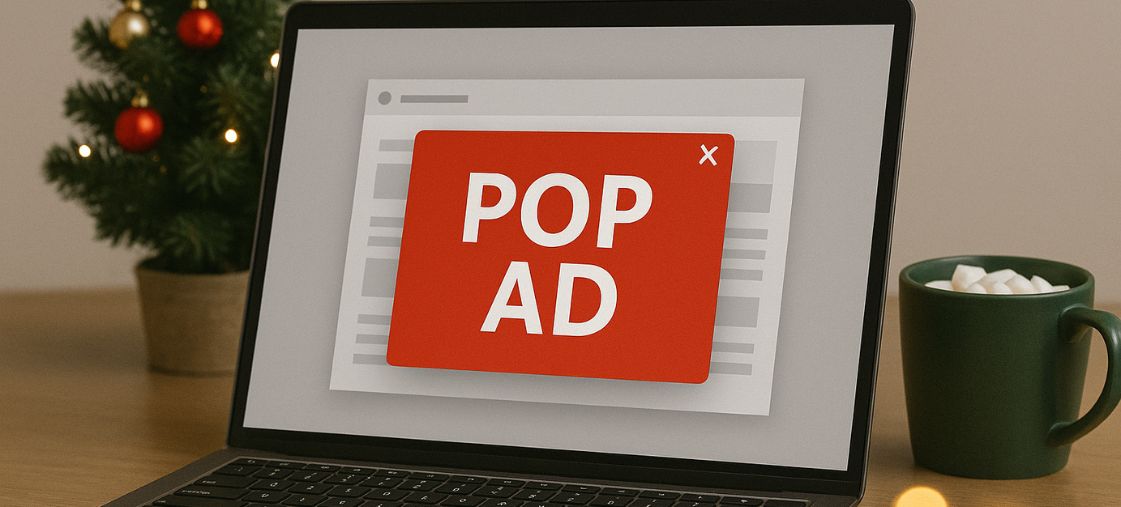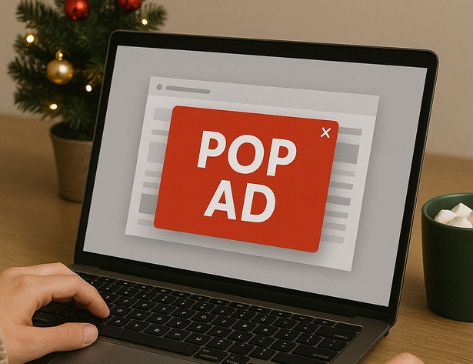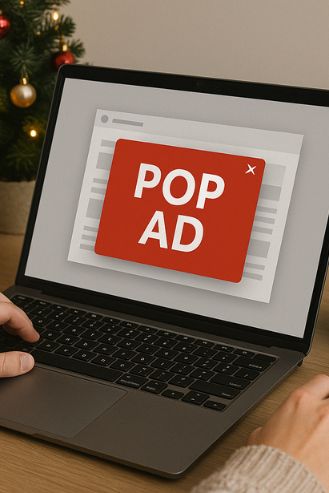
How to Use Pop Ads for cold traffic in Holiday Campaigns
Pop Ads for cold traffic are one of the fastest, lowest-friction ways to warm new audiences ahead of your busiest holiday promotions, letting you scale reach without waiting weeks for algorithms to learn or remarketing pools to fill.
Holiday windows are short, competition is fierce, and CPMs surge. Smart brands start “warming” shoppers before the peak rush so that when the big offer drops, they already recognize your brand, have visited your site, and are primed to convert. For quick, affordable, top-of-funnel touchpoints, pop inventory delivers. If you need a refresher on seasonal planning, these holiday marketing tips are a solid companion to this guide.
What makes pop traffic effective in this role? Pop formats load your page instantly in a new tab or window when a user engages on a publisher site, creating a guaranteed view with minimal creative production. You don’t rely on standard placements battling ad blindness; you earn a moment of attention and a chance to pitch a lightweight value exchange—like a checklist, gift guide, quiz, or early-access opt‑in—that moves a stranger into an email or remarketing audience.
Because the moment is brief, your hook must be crystal-clear. Lead with the exact outcome the visitor gets in seconds, not brand generalities. If you’re sharpening your hooks and headlines, try proven frameworks from this rundown of pop ad copy formulas to lift CTR and engagement on your warm‑up pages.

Why Pop Ads Work to Warm Cold Traffic
Pop inventory shines when your KPI is attention and list growth rather than immediate purchases. Since every pop creates a session, your analytics and pixel fire reliably, and you can design micro-conversions that are easy to complete on mobile and desktop. With proper frequency capping and page speed, you minimize annoyance and maximize qualified audience building.
Cost is another advantage. Compared to crowded social auctions in Q4, pops often deliver lower effective CPCs to your warm‑up asset. That cost curve means you can test multiple value propositions, creatives, and headlines quickly, then pour spend into the winners before Black Friday/Cyber Monday (BFCM) and late-season gift surges.
Step-by-Step Warm‑Up Strategy
1) Clarify the “warm‑up” goal
Pick a single, simple action for the visitor: join SMS for early drops, subscribe to gift alerts, start a size/fit quiz, claim a first‑order code, or build a wish list. Avoid pushing an immediate purchase; the purpose is to move the user from unknown to known while creating relevance for your upcoming holiday offer.
2) Target broadly, then narrow with signals
Begin with broad geos you can ship to profitably and layer device and time-of-day filters. As data accrues, narrow by referrers and placements that show higher opt‑in rates, and exclude obvious mismatches. Keep frequency caps conservative (e.g., 1–2 per 24 hours) to preserve UX and brand favorability.
3) Build a fast, purpose‑built landing experience
Your warm‑up page should load under two seconds, show a single above‑the‑fold promise, and require minimal input. If you need an email and SMS, clearly explain the benefit of both and allow one-tap consent. Show social proof near the call to action (CTA) and repeat the benefit just above the button.
4) Offer value that pays off immediately
“Save 15% on your first order” works, but perceived immediacy matters more. Gift guides segmented by budget, delivery timelines, or recipient (“Under $25,” “Ships in 48 hours,” “For the Traveler”) help visitors make progress now—building reciprocity and intent that your holiday sale can harvest.
5) Align your pop traffic with lifecycle flows
Route new opt‑ins into a short educational sequence that previews holiday perks: early access, limited editions, shipping deadlines, or bundle drops. Map messages to hesitation points uncovered in your quiz or form, and end with a soft introduction of your brand’s hero product or category.
6) Instrument everything for decisions, not dashboards
Track micro‑KPIs tied to your warm‑up goal: cost per engaged session (30+ seconds), cost per quiz start, cost per email + SMS, and carry those cohorts through to first purchase during your holiday promos. This lets you attribute real incremental ROAS to pop‑driven audiences—not just top‑funnel vanity metrics.
Creative and Copy That Convert in Seconds
With pop traffic, you win or lose in the first three seconds. Keep your headline specific, the subhead benefit-rich, and the CTA intentional. Replace brand‑centric claims with outcome‑centric language. Use numerals (“48‑Hour Shipping Guide”), concrete timeframes (“5‑Minute Gift Finder”), and audience tags (“For Cyclists & Runners”).
- Headline: promise the outcome (“Find Gifts That Ship by Friday”).
- Subhead: reduce risk/effort (“No email required until you claim your picks”).
- CTA: action + benefit (“Start My 3‑Step Gift Finder”).
- Visuals: lightweight, fast-loading badges, icons, or compressed product tiles.
- Proof: star ratings, review counts, press badges—small and near the fold.
If you need inspiration, swipe files and competitive research can illuminate angles you’ve missed, but always localize the promise to your category and ensure the first screen communicates value without scrolling. Frictionless micro‑interactions—a single multiple‑choice question or a short checklist—boost engagement and reduce bounce.
Budgeting, Bidding, and Scaling
Start with modest daily budgets while you validate the funnel. Optimize on the warm‑up KPI (e.g., cost per engaged session or cost per opt‑in) rather than CPM alone. Once you find a message‑market match, scale budget in measured steps (20–30% per day) to maintain quality and keep frequency stable. Use day‑parting to concentrate spend when conversion rates are strongest for your audience and shipping cutoffs loom.
Measurement and Attribution You Can Trust
Pop traffic can create lots of sessions quickly, so quality controls are essential. Pair behavioral metrics—scroll depth, time on page, quiz completion rate—with downstream purchase data. Build hold‑out tests where a geo or percentage of traffic does not see pops during the warm‑up window, and measure the lift in eventual holiday sales from exposed vs. control cohorts.
- Define success upstream (opt‑ins, quiz starts) and downstream (first order within promo window).
- Tag warm‑up cohorts so your ESP/SMS and analytics can segment results cleanly.
- Compare blended CAC and payback for pop‑sourced buyers vs. other TOFU sources.
Compliance, UX, and Brand Safety
Pop formats require respect for user experience and regional rules. Use clear disclosures for data capture, honor do‑not‑sell or consent preferences where required, and cap frequency to avoid fatigue. Page speed isn’t just courtesy—it preserves the small window you have to earn engagement and protects Quality Scores where applicable.
Common Mistakes to Avoid
- Sending cold visitors to a generic homepage instead of a focused warm‑up asset.
- Overloading the first screen with multiple CTAs and competing messages.
- Measuring on CPM or clicks alone rather than qualified engagement and eventual revenue.
- Scaling spend before creative and offer are validated against downstream KPIs.
- Ignoring frequency and session quality, which leads to fatigue and brand damage.
Putting It All Together
A practical playbook looks like this: spin up a gift‑finder or shipping‑deadline guide, connect your analytics and pixels, launch pop campaigns with conservative frequency caps, and test three different headline‑offer combos. Route new leads into a short sequence that builds desire and trust while previewing your holiday promises. When the promotion hits, your warmed audience converts at higher rates, lowering blended CAC at the most expensive time of year.
Conclusion
Executed thoughtfully, pop inventory is a pragmatic lever to transform strangers into warm prospects before your seasonal rush. Keep the focus on immediate value, speed, and respect for the user, and measure outcomes that matter beyond a click. If you’d like competitive intel to sharpen your strategy further, tools like Anstrex Pop Ads can reveal messaging angles and placements worth testing—so you hit peak season with proof‑backed creative and a ready‑to‑buy audience.


